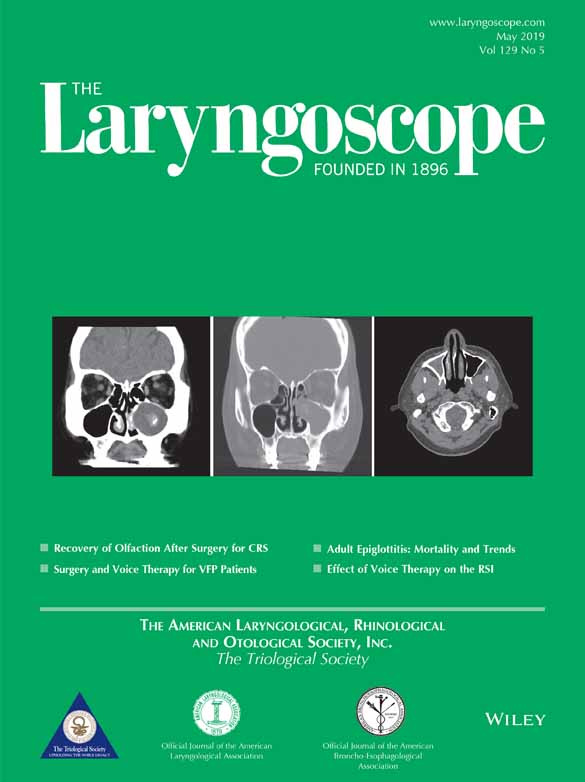Endoscopic endonasal resection of adenoid cystic carcinoma of the sinonasal tract and skull base
Financial Disclosure: The authors have no funding, financial relationships, or conflicts of interest to disclose. Informed consent was obtained from all the subjects involved in this survey.
Abstract
Objectives
Adenoid cystic carcinoma (ACC) is a locally aggressive salivary gland malignancy prone to perineural invasion and local recurrences. In the literature, few data exist to guide treatment when this tumor involves the paranasal sinuses and skull base. We report our experience in the management of sinonasal adenoid cystic carcinoma through an endoscopic endonasal approach.
Methods
Retrospective analysis of patients affected by sinonasal ACC treated through an endoscopic endonasal approach from 1997 to 2015, managed at the Universities of Varese and Brescia, Italy.
Results
Thirty-four patients were included in the analysis. The ethmoid sinus (55.9%), nasal septum (17.7%), maxillary sinus (11.7%), and sphenoid sinus (5.9%) were the primary tumor sites encountered. Twenty patients (58.8%) presented with T3 or T4, without any systemic spreading. Twenty-nine patients underwent endoscopic transnasal resection, whereas the involvement of the anterior skull base in five cases required a transnasal endoscopic craniectomy. Overall, 20 of 34 (58.8%) patients received some form of adjuvant radiotherapy. The follow-up ranged from 12 to 202 months (mean of 73.2 months). The 5-year overall, disease-specific, and recurrence-free survival rates were 86.5% ± 7.39%, 86.5% ± 7.39%, and 71.8% ± 8.67%, respectively.
Conclusions
The endoscopic approach is safe and effective for selected sinonasal ACC, reducing the comorbidities of the external approaches while producing similar oncological results. High T-stage, grade III histology, positive surgical margins, and perineural infiltration all have an important negative prognostic value.
Level of Evidence
4 Laryngoscope, 129:1071–1077, 2019




